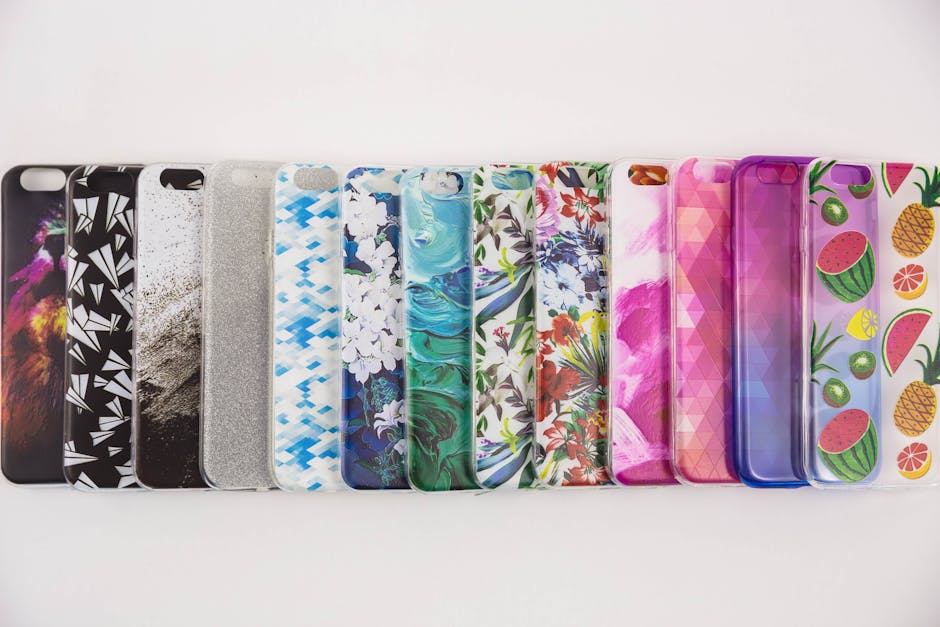Wearable Holograms: Discover the Future of Personal Tech Today!
Imagine adjusting your outfit or checking the weather with just a flick of your wrist, courtesy of holograms that come alive right before your eyes. As many of us embrace new technologies, wearable holograms are rapidly emerging as a revolutionary tool in both personal tech and self-expression. While traditional gadgets have captured our imagination for decades, the future lies in holographic technology that offers new possibilities for interaction and personalization. So, what can we expect from this next frontier? Buckle up as we take you on an exploration of wearable holograms and how they intertwine with our daily lives.
The Rise of Wearable Holograms

The concept of wearable holograms might sound like science fiction, but recent advancements in technology have opened doors that were once only imagined in Hollywood movies. By harnessing cutting-edge display technology, these futuristic gadgets enable users to overlay digital images on the physical world or retrieve information in interactive manners. A growing array of startups and established tech companies is betting on holograms as the next big thing, making them a focal point of innovation.
Bridging the Gap Between Reality and Imagination

The ability to blend digital content with our surroundings represents a significant leap in personal tech. Wearable holograms promise to transform our experiences by making digital interactions more seamless and adaptable to our lives. Just think about it: instead of scrolling through countless screens, you could interact with 3D representations of menus, playlists, or even social media feeds without ever having to take your smartphone out of your pocket.
Current State of Wearable Technology

Before diving into the exciting possibilities of wearable holograms, it's essential to assess where we stand in the world of wearable technology. According to a report from Statista, the wearable technology market has continued to grow, reaching over $100 billion in revenue in recent years. Fitness trackers and smartwatches lead the pack, but the entry of holographic hardware signifies a pivot toward more immersive experiences.
What Makes Wearable Holograms Unique?

Holograms aren't just about visuals; they offer interactive capabilities that could redefine how we interact with technology. Here are some distinctive features that set them apart:
1. Dynamic Interactivity

With wearable holograms, users can engage with digital content in ways that feel natural and intuitive. You might tap, swipe, or even perform gestures to manipulate 3D images floating before you. This shift from passive viewing to active participation changes the game entirely, leading to deeper engagement with digital material.
2. Personalization at Its Best

Holographic technology can enhance self-expression through personalization. Imagine being able to project different outfits or accessories on yourself before choosing that perfect look for the day. This feature not only promotes creativity but also encourages sustainable fashion choices as users can visualize clothing before purchasing.
3. Enhanced Communication

Imagine being able to share experiences with others in real-time using holograms. Whether you're at home or in a different city, being able to project a hologram of yourself during a video call could enhance the feeling of presence, making interactions more meaningful. The technology could even extend to get-togethers, with friends appearing as 3D avatars in your living room.
Potential Applications of Wearable Holograms

The versatility of holograms extends their applicability beyond consumer tech. Here are a few sectors poised to benefit immensely:
Healthcare

The medical field has already begun exploring holographic solutions for training, diagnostic tools, and patient interaction. Surgeons could use wearable holograms to overlay information on patients during procedures, enhancing precision and safety. Further, virtual healers could use real-time data to project treatment options directly onto patients.
Education

Holograms can bring educational content to life. Imagine sitting in a classroom and being able to interact with historical figures or 3D models of complicated molecules. Such immersive experiences could revolutionize how students learn, making lessons memorable and impactful.
Retail

Imagine walking into a store and using a wearable hologram device to visualize how products would look in your life before buying. This could range from trying on clothes to placing furniture in your room virtually. Companies like Urban Explorers are already experimenting with augmented reality to enhance in-store experiences, which suggests that holograms could soon follow suit.
Challenges Ahead

While the future of wearable holograms seems promising, it's essential to recognize the hurdles that may arise in their development and integration into daily life:
Technological Limitations
Despite exciting prototypes, creating affordable, high-resolution, and portable holographic displays remains a challenge. As of now, many existing models are still bulky or too costly for the average consumer. However, as technology continues to evolve, these limitations may become more manageable.
Privacy Concerns
The interactive nature of holograms raises critical questions regarding privacy. If holograms can project aspects of our lives, who is responsible for safeguarding that information? Companies must prioritize user privacy while developing these technologies, ensuring that the benefits do not compromise personal security.
User Adoption
The transition toward wearable holograms will necessitate a cultural shift in how we interact with technology. Just like the initial skepticism surrounding smartphones, widespread acceptance could take time. Companies will need to focus on user-friendly applications and provide ample education to ease the transition.
Notable Companies Pioneering Wearable Holograms
As the world begins to embrace this transformative technology, several key players are leading the charge:
Microsoft HoloLens
Microsoft's foray into holographic technology isn't new. HoloLens has demonstrated how mixed reality can reshape industries from education to healthcare. Their vision for holograms unites enterprise and personal use cases, showing a clear path for widespread adoption.
Magic Leap
Despite facing hurdles, Magic Leap aims to create a wearable holographic experience that competes head-on with Microsoft’s offerings. Their unique approach to spatial computing leads the quest for a more immersive interaction style without sacrificing quality.
Looking Ahead: The Future of Wearable Holograms
The potential of wearable holograms is only limited by our imagination. As technology develops, we may see advancements that enable new forms of self-expression and ways to interact with others and the world around us.
A New Era of Self-Expression
As wearable holograms gain mainstream traction, they will redefine how we express ourselves in both virtual and physical spaces. By customizing holograms to reflect moods or styles, we will engage in dynamic ways to present ourselves to others.
Enhancing Augmented Reality
The emerging field of augmented reality (AR) will likely evolve alongside wearable holograms. As explored in various innovations, AR has already shown promise in enhancing our daily lives. Incorporating holograms could create a seamless blend of real and digital, enriching experiences significantly.
Integrating with Social Media
The connections between wearable holograms and social media platforms could lead to entirely new ways of sharing experiences. Imagine sharing your holographic appearance with friends scrolling through timelines, engaging them on a deeper level than a simple picture could ever achieve.
Final Thoughts
Embracing wearable holograms opens a fascinating chapter in the narrative of personal tech and self-expression, pushing the boundaries of how we experience the world around us. Though fertile ground for innovation lies ahead, it is crucial that developers remain attentive to user concerns and industry standards. The journey from concept to reality will no doubt encounter challenges, but with the right vision and execution, wearable holograms could dramatically enhance our lives, transforming how we communicate, shop, learn, and express ourselves.
So, keep an eye on this frontier; wearable holograms may just shape the future you didn’t know you were waiting for!



